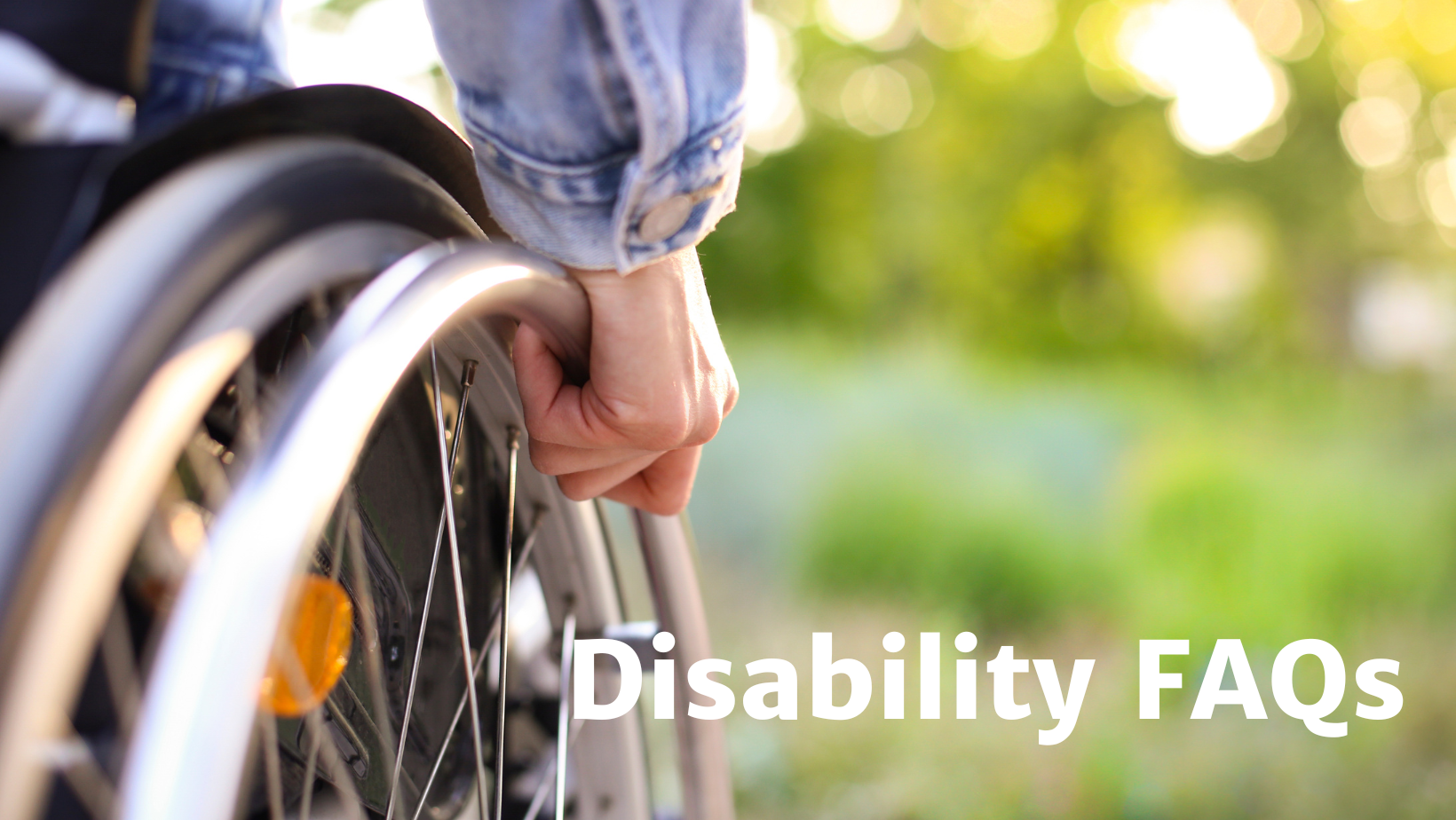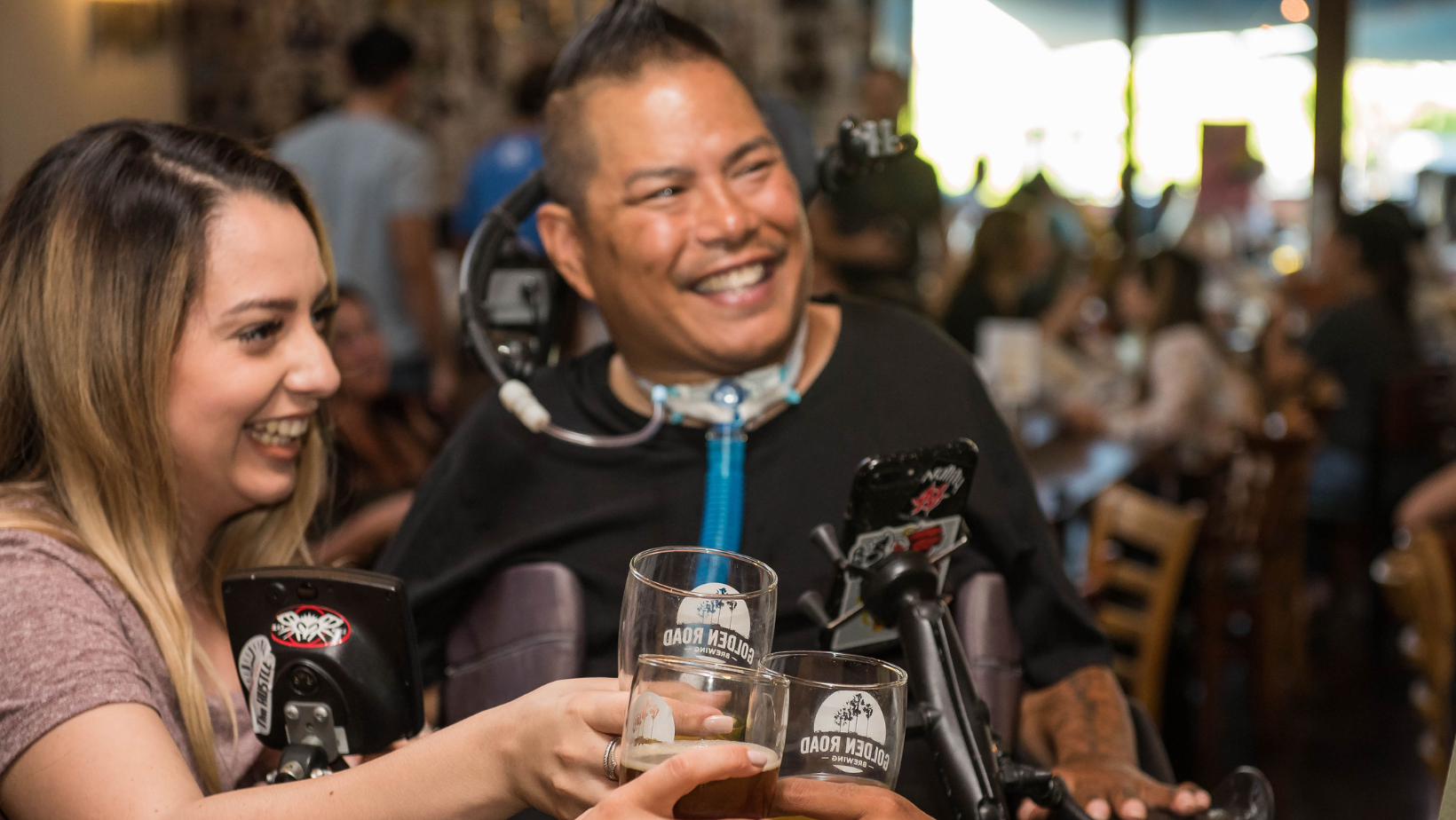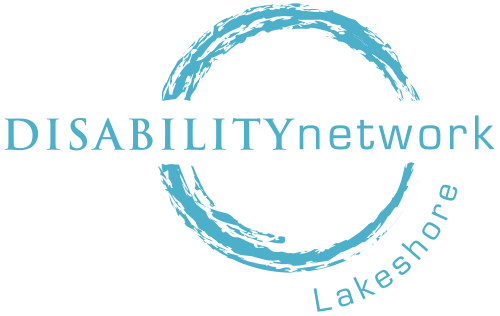
A hand grips the push rim of a wheelchair.
Disabilities are a natural, normal part of life. That doesn’t mean we can’t ask questions! DNL has compiled a list of frequently asked questions designed to break down some myths, educate those who are curious, and help those looking for answers.
What is a disability?
A disability is a physical or mental impairment that significantly limits one or more major life activities. Disabilities fall under seven categories: physical, sensory, developmental, learning, cognitive, mental, and health related. There are countless disabilities including diabetes, arthritis, blindness, and Autism. A large majority of disabilities are non-apparent, meaning they are not visible or outwardly noticeable and, according to the Disabled Living Foundation, 80% of people with a disability have acquired the disability after they were born.
How common are disabilities?
According to the Centers for Disease Control and Prevention, 26%, or just over 1 in 4 US adults have a disability. The ratio is slightly higher in Michigan, where close to 1 in 3 adults live with a disability.
What is the difference between person first and identity first language?
Person first language places the individual before the disability. An example would be “the artist has a disability.” Identity first language places the disability before the person. This would sound like “the disabled artist opened a studio.” While Disability Network Lakeshore tends to use person first language in its communication, some individuals and communities prefer identity first language. If you’re curious which language to use, it’s best to listen to the individual or ask them how they’d like to be addressed.
What is the difference between the medical model and the social model of disability?
According to the medical model, able bodied people are considered to be normal. If someone with a disability wants to have a normal, happy, and healthy life, the medical model asserts that they must be fixed. Additionally, the medical model maintains that medical professionals, not the individual, are the primary experts on disability.
The social model is a newer approach for people with disabilities. Instead of viewing the disability itself as an issue, the social model states that society and the barriers that exist must be fixed NOT the individual. In other words, instead of the person with a disability adjusting to the norms of society, society must adjust so that the person with a disability is included in the conversation. Ensuring that community events, buildings, and workplaces are accessible to everyone is a critical element of the social model.
What is the Independent Living Philosophy?
The Independent Living Philosophy is a drastic switch away from the medical model. It is closely related to the social model. The Independent Living Philosophy is all about consumer control for the individual with a disability. At its core, the Independent Living Philosophy states that individuals with disabilities should have the same rights as people without disabilities. They should be able to participate in the same community events and equally contribute to the community. The Independent Living Philosophy allows individuals with disabilities to make the decisions that affect their own life. These decisions include housing, employment, and socialization.

A man using a ventilator enjoys a brewery with his wife.
What is a Center for Independent Living?
A Center for Independent Living, or CIL, is a nonprofit organization designed to help connect people with disabilities to appropriate, localized services. Individuals with disabilities make up at least 51% of the staff and board of any CIL thereby giving consumer control to those with disabilities. There are over 400 CILs across the United States. The state of Michigan has 15 CILs across its many counties. Disability Network Lakeshore is the CIL designated to assist Ottawa and Allegan County residents with disabilities. For more information about what DNL can do for you, visit our homepage by clicking here!
What is ableism?
Ableism is the belief that able bodied people are better than those with disabilities. Any prejudice or discrimination against someone because of their disability is ableism. Like the medical model, ableism is rooted in the idea that someone with a disability needs to be fixed. Ableism can range from using inappropriate language like “that’s a retarded idea” to failing to provide reasonable accommodations to someone with a disability. Often, someone who uses ableist language or rhetoric does not do so intentionally. Rather, ableism is an unfortunate biproduct of society stemming from a possible lack of education or advocacy. This can cause many to view able bodied people as inherently better.
What is accessibility and why is it important?
According to the Centers for Disease Control and Prevention, accessibility is “when the needs of people with disabilities are specifically considered, and products, services, and facilities are built or modified so that they can be used by people of all abilities.” Accessibility is important because it recognizes the dignity of all individuals and allows them the opportunity to participate, contribute, and belong to their communities.
What are job accommodations?
A job accommodation is a way to make the workplace more accessible for an employee with a disability. An accommodation can range from making an employee’s schedule flexible to reserving a parking space for the employee that is closer to the facility. According to the Job Accommodation Network, 59% of workplace accommodations cost the employer no money. The remaining 41% often cost less than $500 and come with tax incentives. For more information and to find a list of reasonable accommodations, click here.
Are people with disabilities affected by education, income, healthcare, or housing inequalities?
Yes! Because of long held societal beliefs that people with disabilities need to be fixed and that non-disabled people are the standard, those with disabilities are often the target of education, income, healthcare, and housing discrimination. For example, according to the Fair Housing Center of West Michigan, for seven straight years, discrimination against a homeowner or tenant with a disability has been the number one complaint filed with the organization. Because of lower expectations, students with a disability graduate high school and college at a significantly lower rate than students without disabilities. According to a recent report from the US Census Bureau, employees with disabilities make as little as $0.66 for every $1.00 employees without a disability earn.
What is disability pride?
Disability Pride was created as a response to societal ableism. It is a belief that an individual with a disability should embrace every element of their life, including their disability. It’s important to note that disability isn’t a monolith. This means that someone’s experience with their disability is not the same as the next person. Disability Pride can mean something different to everyone.
How can I be a better ally to people with disabilities?
There is a wide variety of ways to help those with disabilities. Whether it’s by hiring someone with a disability, identifying and speaking out against ableism, or ensuring that your event, workplace, or business are accessible, you are helping the community by allowing everyone, regardless of their ability, to participate, contribute, and belong. When having these discussions or identifying ways to make something more accessible, it’s important to include people with disabilities in the conversation. Lived experience gives them priceless knowledge that can help make the community accessible for everyone.
